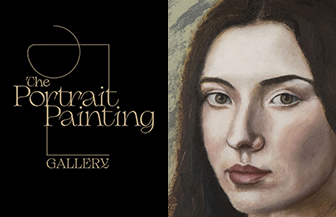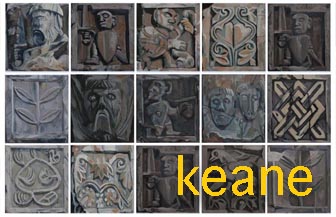Visitors to Barga often ask what are the metal rings attached to bars on the facade of the Palazzo Pancrazi.
Generally they are told of Barga being famous for its silk production 500 years ago and the tradition of hanging silks from the windows during major festivals.
But the story seems to be a little wobbly as nobody really seems to be sure if the story is correct or not*.
This week finally an image has surfaced which might actually point in the right direction.
A painting by Pierantonio di Niccolò (1471 – 1478) seems to show exactly the same metal rings and bars in the architecture as those found in Palazzo Pancrazi and also a wooden bar crossing the open window resting in the U shaped extension and draped across it – some red fabric.
Tavolette di San Bernardino – 1473 – San Bernardino appare di notte a Giovanni Antonio Tornano ferito in un agguato e lo risana – Pierantonio di Niccolò (1471 – 1478)
 |
 |
 |
 |
I visitatori di Barga spesso chiedono cosa siano i anelli di metallo attaccati alle barre sulla facciata del Palazzo Pancrazi.
In generale gli viene detto che Barga è famosa per la sua produzione di seta 500 anni fa e la tradizione di appendere la seta dalle finestre durante i festival importanti.
Ma la storia sembra un po’ incerta poiché nessuno sembra essere sicuro se la storia è corretta o meno.
Questa settimana finalmente è emersa un’immagine che potrebbe effettivamente indicare la direzione giusta.
Una pittura di Pierantonio di Niccolò (1471-1478) sembra mostrare esattamente gli stessi anelli di metallo e le barre nell’architettura di quelli trovati nel Palazzo Pancrazi e anche una barra di legno che attraversa la finestra aperta e poggia nell’estensione a forma di U, ricoperto da alcuni tessuti rossi.
Tavolette di San Bernardino – 1473 – San Bernardino appare di notte a Giovanni Antonio Tornano ferito in un agguato e lo risana – Pierantonio di Niccolò (1471 – 1478)
The Stories of San Bernardino are a cycle of eight tablets painted in tempera, dated 1473 and kept today in the National Gallery of Umbria in Perugia. Prudently referred to a “Maestro” or “Workshop of 1473”, some of the best Umbrian painters of the time participated, such as Perugino, Pinturicchio and Piermatteo d’Amelia.
The influence of Piero della Francesca, then active in Urbino, is undeniable in the airy architecture of the backgrounds. The figures are small and occupy the lower band, while the true protagonist of the scene is the sumptuous architecture, which prevails over the figures solemnly marking the space in a regular manner.
The light is clear and sharp, the colors soft, the shadows lightened, on the model of Piero, while the architectural purity reveals a meditation on the Urbino school. The author of the architecture is uncertainly identified in Perugino himself or in the generic Master of 1473, while the figures are the work of various painters, among which there was certainly Perugino (San Bernardino heals a girl) and perhaps Piermatteo d’Amelia. On the other hand, the Healing of the blind man, San Bernardino brings back to life a man found dead under a tree and the Liberation of the prisoner are attributed to Pinturicchio, for the elegant attitude of the figures in angular drapery.
The polychrome decorations that cover the architectural scores and the Gothic acuity of some figures are linked to the local heritage
Studi recenti hanno permesso di ricostruire l’esatta successione dei dipinti, che propongono di inserire in basso le tavole con l’ambientazione architettonica più complessa, per poi proseguire con le scene narrative e le ambientazioni paesaggistiche. La tavola in questione viene quindi posta nel secondo registro a sinistra partendo dal basso.
Le otto tavolette e il trigramma bernardiniano dovevano verosimilmente costituire una nicchia: le otto storie erano distribuite in modo da formare due alte paraste poste obliquamente, come si evince da tracce di cornice sul lato destro di quelle disposte a destra, e chiuse in alto dal celetto con il trigramma bernardiniano.
Galleria Nazionale dell’Umbria
- On the upper palace floors, in the spaces between the windows, about half way up, the rod hooks were to be found. They were in the shape of a horizontal arm driven into the wall, terminating in a semicircle facing upwards and reinforced by a rod-like prop on which a ring was supended. Horizontally moving wooden rods passed through the rings in front of the windows, upon which clothes or curtains were hung, or animals or bird cages might be attached. Below and along the string-courses were the parade hooks to which hangings and tapestries might be hung during festivals. – source




